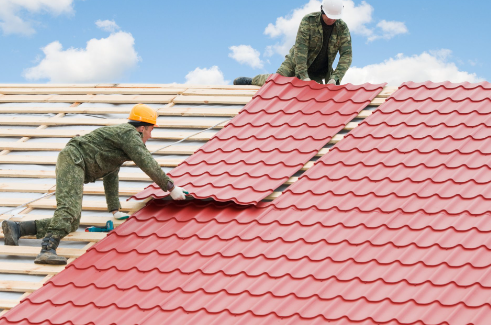Selecting the appropriate roofing style for your residence is a momentous choice that holds the potential to influence both the visual charm and practicality of your property. Distinct roofing styles come with diverse degrees of robustness, energy efficiency, and street-side allure. Within the scope of this article, we will delve into the merits and drawbacks linked to a range of popular roofing styles. This exploration endeavors to provide you with the insights essential for making a decision that is both well-considered and informed.
1. Gable Roof
Pros:
Aesthetic Appeal: Gable roofs, characterized by their triangular shape, offer a classic and timeless look that complements a wide range of architectural styles.
Effective Water Drainage: The steep slope of gable roofs allows rainwater and snow to quickly slide off, reducing the risk of leaks and water damage.
Ventilation: Gable roofs often provide better attic ventilation, which can help regulate indoor temperatures and extend the lifespan of the roofing materials.
Cons:
Vulnerability to High Winds: Gable roofs can be susceptible to damage during severe wind storms or hurricanes due to their shape and large surface area.
Maintenance: The vertical walls at the ends of gable roofs, known as gables, require extra maintenance and may need more frequent repainting or repairs.
2. Hip Roof
Pros:
Stability: Hip roofs are known for their stability and ability to withstand strong winds, making them a suitable choice for regions prone to hurricanes or heavy storms.
Architectural Appeal: Hip roofs offer a more unique and modern appearance compared to standard gable roofs, adding character to the overall design of the house.
Even Load Distribution: The sloping sides of hip roofs distribute weight evenly, reducing the risk of structural strain over time.
Cons:
Construction Complexity: Hip roofs are generally more complex to design and build, which can lead to higher labor and material costs.
Less Attic Space: The inward slope of the roof reduces the amount of usable attic space, which could limit storage or living options.
3. Flat Roof
Pros:
Accessibility: Flat roofs can serve as additional outdoor living space, such as rooftop gardens or patios.
Energy Efficiency: Flat roofs can accommodate solar panels and green roofing systems, contributing to energy savings and environmental sustainability.
Ease of Maintenance: Since the roof is easily accessible, maintenance tasks like cleaning gutters and inspecting for damage are simpler.
Cons:
Drainage Issues: Flat roofs require effective drainage systems to prevent water pooling and leaks, which can be a challenge if not properly designed and maintained.
Durability: Flat roofs are more prone to wear and tear due to constant exposure to the elements and foot traffic if used as a living space.
4. Mansard Roof
Pros:
Versatile Space: Mansard roofs feature a double slope, allowing for additional living or storage space within the attic.
Architectural Elegance: These roofs are associated with a sophisticated and historic aesthetic, often found in classical or Victorian-style buildings.
Cons:
Complex Construction: Mansard roofs are intricate to construct and may require skilled labor, potentially leading to higher construction costs.
Maintenance Challenges: The steep slopes and decorative features of a mansard roof can make repairs and maintenance more challenging.
5. Gambrel Roof
Pros:
Ample Space: Gambrel roofs, resembling barn roofs, provide extra headroom and space in the attic area, making them suitable for storage or even additional living quarters.
Country Aesthetic: These roofs evoke a charming, rustic feel, which can enhance the overall appeal of certain architectural styles.
Cons:
Limited Wind Resistance: The steep pitch of gambrel roofs can make them susceptible to wind damage, especially in regions prone to strong gusts.
Snow Buildup: The design of gambrel roofs can lead to snow accumulation, potentially causing stress on the structure if not cleared promptly.
In summation, the process of selecting the optimal roofing style demands meticulous contemplation of a multitude of factors, encompassing climate conditions, architectural predilections, maintenance prerequisites, and financial parameters. Each roofing style presents an exclusive amalgamation of advantages and disadvantages. Therefore, assessing these pros and cons is pivotal in arriving at a judicious choice that harmonizes with your dwelling and way of life. Engaging in consultations with roofing experts can additionally furnish you with invaluable perspectives, assisting you in determining the most fitting option tailored to your individual requirements.



